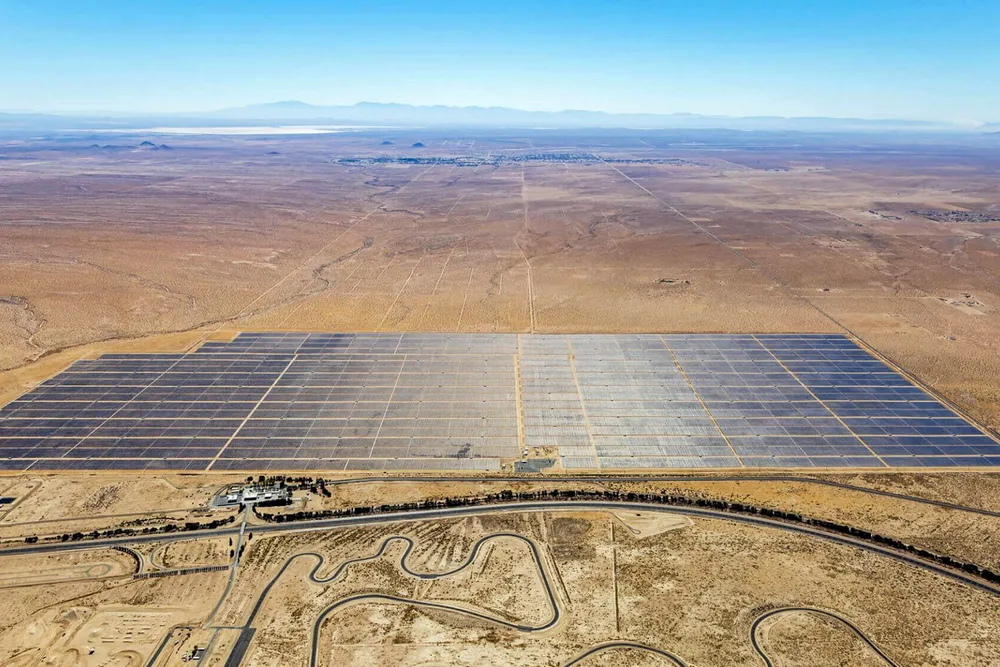US grid-scale solar installs surge 59% in Q2 despite hurdles impeding even greater growth
A new report by Wood Mackenzie and industry lobby SEIA highlights robust segment demand and development pipeline

The US installed 7.5GW of utility-scale solar capacity in the second quarter, up 59% from a year earlier, despite impediments to project execution that are suppressing even greater growth, according to a new report by Wood Mackenzie and Solar Energy Industries Association (SEIA).
The grid-scale project pipeline is strong which Woodmac estimates at 96GW on a direct-current basis with project developers contracting 7.7GW of capacity in the second quarter. Demand is being driven mainly by electric utilities and large corporations.
Woodmac lowered its 2024 segment installations forecast by 2% to 29.8GW from a year earlier, after hearing that some projects are getting delayed into next year.
This is due to lengthening lead times for critical high-voltage circuit breakers and transformers, and limited labour availability from engineering, procurement, and construction firms.
“Consequently, our outlook for 2025 has increased by more than 2GW to 31.5GW,” the energy analytics firm said in the report.
Despite headwinds, Woodmac remains bullish on grid-scale solar, estimating it will account for 186GW of the 250GW of photovoltaic capacity the US will install this year through 2029.
The report does not mention US national elections on 5 November which could create uncertainty for the industry should Donald Trump win a second, four-year presidential term and Republicans gain control of Congress.
Trump is on record as favouring repeal of long-term solar (and wind) federal tax credits, the main motor driving demand for clean energy and reshoring of related supply chain manufacturing capacity.
He also wants to impose a tariff of at least 60% on goods from China and 10-20% on those from other nations.
Kamala Harris, the Democratic nominee, who cast the tie-breaking vote in the Senate that enabled passage by Congress of the partisan landmark 2022 climate law, fully supports its tax credits.
Harris has said little about tariffs other than to repudiate an across-the-board approach, and there is a latent element of risk in what trade policies she could pursue, if elected.
Trade policy for solar under Biden and Harris has been contradictory at times. Despite their criticism of Trump’s China tariffs, they kept them in place and earlier this year, raised them on Chinese solar cells and on related products such as aluminium, and steel.
In 2022, Biden imposed a two-year moratorium on anti-circumvention and anti-dumping tariffs applied to Chinese-branded crystalline-silicon cells and modules from four nations in Southeast Asia, a move Harris supported.
Biden said it was necessary to ensure near-term US supply and give domestic suppliers time to expand capacity to help meet an expected surge in demand after 2024. The US industry is heavily dependent on imported solar materials, components, and panels.
The move was controversial as it has allowed those products to enter the US in violation of its trade rules and undercut his administration’s own probe into alleged circumvention before the Department of Commerce (DoC) could issue a final report.
PV shipments to the US from Southeast Asia subsequently exploded. The waiver remained in effect despite a DoC determination last year that four of eight leading Chinese PV producers were routing their supply chains through those countries to avoid tariffs on imports from China. Another 22 companies were also under investigation.
Several US manufacturers filed petitions seeking new tariffs on imports from those countries. If enacted, tariffs could also apply to imports of modules produced outside the targeted nations with cells produced there.
Woodmac said despite the uncertainty surrounding a potential new round of levies, impacts on the grid-scale segment would be “negligible.”
Reasons why include a substantial amount of module inventory already allocated to current projects, most under construction, that is expected to last through this year, at least. Second, the solar supply chain has expanded considerably in the last two years.
“Major suppliers are either shifting their cell and module supply chains outside of the targeted countries or have already done so,” said the report.
(Copyright)